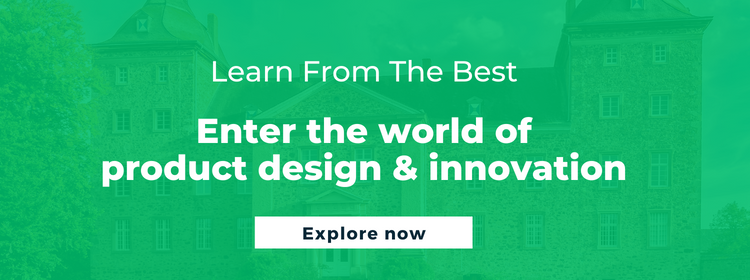The 6 Stages of the Design Thinking Process and Why They are Important

Imagine if there was a sure-shot way of creating perfect products that also guarantee customer satisfaction. That would probably result in all companies becoming successful, leading to an infinitely competitive marketplace. While there might not be a definite formula for developing such user-friendly products today, the one thing that comes close to helping companies do so is the design thinking process. Design thinking may sound like a modern-day buzzword but it has truly transformed how businesses approach problem-solving. This human-centric design process has been a game changer in terms of identifying challenges and developing refined solutions to better understand user behavior.
Most people assume that design thinking only caters to the design industry. However, design thinking methodologies are used across a variety of industries today ranging from technology, finance, retail, and entertainment, to hospitality and even healthcare. A few notable companies that use the design thinking process to drive innovation are Samsung, Uber, Netflix, Apple, Microsoft, Starbucks, Nike, and Airbnb.
What is the Design Thinking Process
A design thinking process is a user-centric approach to innovation that streamlines existing challenges and helps target an improved end result. It is not a one-step process but consists of six stages that serve as a guide to identifying complex problems, challenging assumptions, and learning more about the target audience. This six-stage process requires you to:
- Empathize
- Define
- Ideate
- Prototype
- Test
- Implement
These steps are not sequential and have been devised primarily to serve as a guide. The main purpose of integrating the design thinking process is to question existing limitations and develop creative strategies that will help enhance user experience.
Why is the Design Thinking Process So Important
The design thinking framework essentially helps businesses get a realistic idea regarding product performance. It directs them towards the steps they need to take in order to better meet customer needs. To thrive in a highly competitive marketplace such as the one that exists today, companies need to be more aware of how their brand(s) connects with customers. This is where the design thinking process adds value.
It urges businesses to literally ‘think outside the box’, identify setbacks, and formulate ground-breaking solutions. The different stages of design thinking help spark a creative mindset that creates tangible solutions to drive innovation. In fact, it also enhances teamwork and offers a competitive advantage as a result of its customer-centric approach.
What are the Six Stages of the Design Thinking Process
According to the Hasso Plattner Institute of Design (d.school), the design thinking process is a five-step model. However, as per some models, there is an additional sixth step called implementation. Let us take a look at the six actionable stages of the design thinking process:
1. Empathize
It is important to empathize with the target audience and understand their needs in order to accurately address the challenges at hand. This phase encourages you to observe and engage with customers, learn their expectations, and identify underlying challenges. Conducting surveys and qualitative interviews are a few ways to begin empathizing with consumers.
2. Define
The next step is to gather and analyze data from the ‘empathize’ stage so as to clearly define the core problem statement. A good problem statement should be treated less like a business goal and must be more human-centered. This will help outline the real issue, before proceeding to the ideation stage.
3. Ideate
Now that you have a clear picture of your target audience, and what their expectations are, and have a clearly defined problem statement, it is time to generate ideas. This stage involves brainstorming and exploring creative solutions to potentially solve the problem statement.
4. Prototype
This experimental phase aims to find the best solution for each identified problem. It is done by using scaled-down versions of the concept—also called prototypes—which are tested on users. Based on the feedback, you can make changes and develop products that best meet customers’ needs.
5. Test
Once the final prototype is ready, it is time to put it to the test by observing how the target audience interacts with the product and what their feedback is. It is still an interactive stage, where you can go back and make improvements to ensure the end solution is in alignment with overall user feedback.
6. Implement
The implementation stage, which is often regarded as the sixth and final stage in certain models, is where the visualized output is executed. It is a culmination of the preceding stages that come together post-development to implement the final solution.
 The Design Thinking Process in Action
The Design Thinking Process in Action
We have outlined a definitive six-step design process that leads to beneficial end results. However, it is important to note that the design thinking process is non-linear and extremely flexible. A design team may work on one stage at a time or simultaneously on multiple stages and incorporate feedback as they go. This is one of the main benefits of applying the design thinking process.
The six-stage process can be integrated through dedicated design thinking workshops. Here, the design team will be taken through each stage of the design process in great detail and learn how each of these steps contributes to developing creative and refined user-centric solutions.
Apart from workshops, the design thinking process can also be incorporated as a general framework in a company that helps teams get a better understanding of how to identify challenges and generate innovative customer-friendly solutions. You can also focus on a few or even a single stage from the six-step process that you think will be most beneficial to the company. This can be empathizing with customer needs, ideating, or simply defining problem statements—anything that promotes developing a user-centric approach.
What is the Key Element in Any Design Thinking Process
There are a few key elements that are an essential part of the design thinking methodology. These elements, when put together, help create tangible products that customers really want, as opposed to simply designing a product without a clear end goal. We have outlined the five main characteristics of the design thinking process below:
Human-Centricity
The main idea is to understand the customer and take feedback into consideration while developing products. Building empathy to really understand what the customer desires are key to driving innovation.
Collaboration
Design thinking encourages co-creation by promoting collaboration across multidisciplinary teams that may typically not work together otherwise. It brings diverse perspectives together to create tangible user-centric solutions.
Creative Ideation
As design thinking is a solution-based approach, the core focus is on generating creative ideas, analyzing them from varied perspectives, and considering different solutions to resolve the problem statement.
Iteration
It involves reframing challenges, changing prototypes, and reworking solutions until they better align with customer feedback. The key is to conduct early rounds of testing and incorporate feedback to deliver products that customers will love.
Prototype-Driven
The design thinking process is action-oriented which is why having tangible prototypes and testing them with real users is important. This allows you to gather the right feedback and make improvements whenever and wherever necessary.
The main goal of the design thinking process is to develop products or services keeping real users in mind. Once this useful design framework becomes a part of the organizational culture, it automatically begins to foster better collaboration, teamwork, creativity, and innovation. If you aspire to build a career in product development and innovation, consider taking up a product strategy and design thinking course with Emeritus where you can choose from a wide range of professional courses offered in collaboration with top-tier, global universities.
By Neha Menon
















